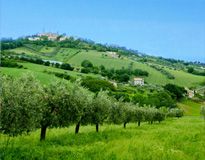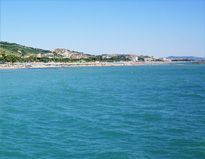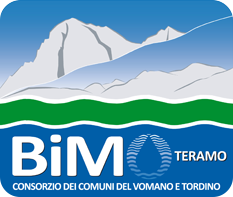To report any additions, changes and/or corrections click on "Submit a content"
The Church of San Sonato is located in the district of San Donato and is a beautiful country church dating from the seventeenth century defined by Carlo Levi the "Sistine Chapel of majolica" as it internally preserves a beautiful and valuable ceiling covered with ceramics and majolica unique in its kind. It has an area of about 100 square meters and consists of more than 800 bricks that bear three dates: 1615, 1616 and 1617. The ceiling has sloping trusses, divided into compartments that house bricks blocked by special rafters. In 1968 an important work of restoration and restoration led to the replacement of deteriorated or damaged bricks. The façade is preceded by a portico surmounted by a round arch. The roof is gabled and a small bell tower with a bell rises from the back. The interior is a single room and should be noted is the altarpiece embellished with a precious fresco of the seventeenth century.
The ceiling of San Donato
It is undoubtedly a unique pearl in the Italian artistic heritage for ceramics. It is a ceiling completely covered with majolica bricks produced and designed in Castelli and for its uniqueness and specificity was defined by Carlo Levi "the Sistine Chapel of Italian Majolica" and by the scholar Timothy Wilson "one of the most ambitious enterprises of Italian majolica on end of the Renaissance ". The ceiling was made by the inhabitants of Castelli for devotion, as evidenced by some bricks that bear the Latin inscription: "the people of Castelli's land made this ceiling in honor of God and at the same time in perpetual memory of the Blessed Virgin Mary". To be precise, to realize it and put it in place were the "maiolicari" castellani reunited in a brotherhood that succeeded in the task of working, painting and joining over 800 bricks with the dates 1615, 1616, 1617.
The ceiling structure is composed of wooden beams that divide the sloping trusses into sections in which rows of five bricks are placed blocked by rafters. In 1968, to resolve the deterioration of some bricks and the deformations of the beams, important restoration works were carried out. The illustration of the ceiling is impressive and very sophisticated and attests to the existence of an organic project and idea that find its place in a precise philosophical, cultural and religious climate, that is that of the Counter-Reformation. For what concerns the decoration, first of all the geometric and stereometric themes, rhombuses, triangles, lacunars, rosettes, with radial motifs and then rich adornments, acanthus leaves, floral festoons, to which the decoration is added vegetable and animal characterized by birds, hunting dogs, greyhounds, horses, deer, snakes and hares. There are also elements dear to the tradition and culture of ceramists, namely the knot of Solomon, the sun with sharp and snake-shaped rays and the noble symbols of some families.
Highly sought after by collectors, the prestigious Castelli ceramics can be found today in the most important museums in the world, from the British Museum in London to the Hermitage in Saint Petersburg.
In addition to the many artisan shops located along the streets of the village, the Liceo d'Arte "F. Grue ", which houses the splendid" monumental Nativity "in ceramic with about 60 characters. Here you can also admire the "International Collection of Modern Art" and the "Anthological Exhibition". Every summer at Castelli there is an important exhibition-market of ceramic craftsmanship, which ends with the traditional "throwing of dishes" from the lookout on the cliffs of the river Leomogna.
 en
en 













